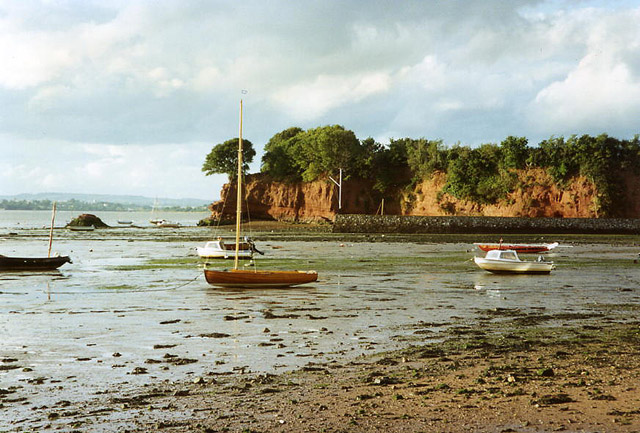Further down the east bank of the River Exe from Topsham is a village called Lympstone. There is a distinctive red-brick clock tower in the village called
Peter’s Tower, right on the estuary shore, built by a Liverpool merchant called William Peters in 1885. Thanks to the Landmark Trust, which rescues historic buildings and rents them out, this property is available as a holiday let. This property would be especially appealing to birdwatchers, because it offers a grandstand view over the birdlife of the River Exe. In January and February, the avocet can be observed; these birds, easily identified by their distinctive upturned beaks, were once very rare, but are increasing in numbers. Indeed, such is the draw of the avocets in the Exe Estuary, that the railway line linking Exeter with Exmouth, which includes a stop at Lympstone, is named
“The Avocet Line”.
There is a distinctive red sandstone rock on the shore at Lympstone called Darling's Rock, so named because when the local fishing fleet was returning in dense fog one day the wives of the fishermen gathered on the rock (which was bigger in those days, having eroded considerably since) and sang songs to guide their menfolk to the shore. One of the fishermen shouted "Oh my darling!", and this is how the rock got its name.
Map of the area.
 |
Lympstone, Darling's Rock - geograph.org.uk - 67245. Photo by Martin Bodman, via Wikimedia Commons.
|

No comments:
Post a Comment